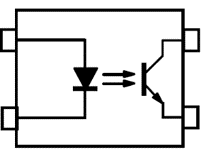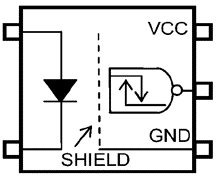-
My ToshibaSemicon
- 반도체 탑
-
애플리케이션Automotive
Body Electronics
xEV
In-Vehicle Infotainment
Advanced Driver-Assistance Systems (ADAS)
Chassis
IndustrialInfrastructure
BEMS/HEMS
Factory Automation
Commercial Equipment
Consumer/PersonalIoT Equipment
Healthcare
Wearable Device
Mobile
Computer Peripherals
-
제품자동차 디바이스
Discrete Semiconductor
다이오드
트랜지스터
로직 IC
Analog Devices
Digital Devices
Wireless Devices
※
: Products list (parametric search)
파워반도체※
: Products list (parametric search)
Isolators/Solid State RelaysPhotocouplers
Digital Isolators
Solid State Relays
Fiber Optic Transmitting Modules
※
: Products list (parametric search)
MOSFETsIGBTs/IEGTs바이폴라 트랜지스터※
: Products list (parametric search)
다이오드※
: Products list (parametric search)
마이크로컨트롤러모터 드라이버 ICIntelligent Power ICs※
: Products list (parametric search)
전원관리IC리니어 IC※
: Products list (parametric search)
범용로직IC리니어 이미지 센서기타 제품용 IC기타 제품용 IC
※
: Products list (parametric search)
-
개발/설계 지원
-
기술 자료
- 구매처
- 부품 번호 & 키워드 검색
- 상호 참조 검색
- 파라미터 검색
- 재고 확인 및 구매
This webpage doesn't work with Internet Explorer. Please use the latest version of Google Chrome, Microsoft Edge, Mozilla Firefox or Safari.
3글자 이상 입력하세요. Search for multiple part numbers fromhere.
The information presented in this cross reference is based on TOSHIBA's selection criteria and should be treated as a suggestion only. Please carefully review the latest versions of all relevant information on the TOSHIBA products, including without limitation data sheets and validate all operating parameters of the TOSHIBA products to ensure that the suggested TOSHIBA products are truly compatible with your design and application.Please note that this cross reference is based on TOSHIBA's estimate of compatibility with other manufacturers' products, based on other manufacturers' published data, at the time the data was collected.TOSHIBA is not responsible for any incorrect or incomplete information. Information is subject to change at any time without notice.
3글자 이상 입력하세요.
What types of photocouplers are available?
A photocoupler is a product consisting of an LED at the input side and a photodetector at the output side combined together inside. A photocoupler product varies depending on the type of photodetector at the output side. Its main varieties include a transistor-output photocoupler, IC-output photocoupler, triac-output photocoupler, and MOSFET-output photocoupler (called a "photorelay"). In addition, the functions of photocouplers include signal isolation, feedback detection, pre-driver, and isolation switch functions.
1. Transistor-output photocoupler/transistor coupler
When a photocoupler first appeared on the market, only this type was available. Owing to its low cost and high general versatility, this type is still used most in the market and its range of applications is wide. Some products are provided with such features as high transfer ratio, high breakdown voltage, and low-input drive. Function-wise, transistor-output photocouplers are widely used for signal isolation, feedback detection, and isolation switch.
2. IC-output photocoupler/IC coupler
An IC-output photocoupler is a photocoupler into which photodetector devices are integrated in order to realize high speed and incorporation of functions. While a transistor-output type photocoupler can transmit at least several kHz to several tens of kHz signals, this photocoupler can transmit approx. 1 to 50MHz high-speed signals. Roughly speaking, there are three product groups: 1) Group of general-purpose products for logic signal transmission, 2) Group of products with functionality as a pre-driver for a power device (IGBT), and 3) Group of products with current/voltage feedback functionality.
3. Triac-output photocoupler/triac coupler
This type of photocoupler is frequently used as an isolation switch for controlling an AC load, such as a motor and a solenoid, directly connected to a 100Vrms or 200Vrms commercial power supply used in such a place as a home, office, and factory. Using a triac with higher breakdown voltage, while applying electric isolation, it can perform ON/OFF control with a low current of approx. a dozen mA. Only an approx. 100mA AC current can be controlled by a device alone. However, by using this photocoupler as a pre-driver for the main triac, an AC current up to approx. several amps can be controlled.
4. MOSFET-output photocoupler/photorelay
This photocoupler is a device provided with two MOSFETs connected common-source at the output stage and also provided with functionality equal to that of a mechanical relay or lead relay. Since the MOSFETs have linear output characteristics in their voltage-current characteristics, this device is distinctive in that it can not only function as a simple switch, but also switch analog signals.





